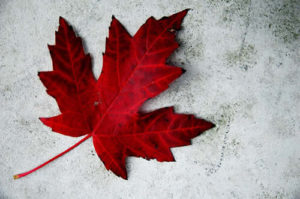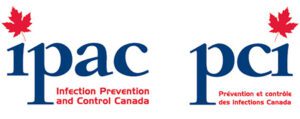Renting and Concerned about Mold?
Renting and concerned about mold? What to look out for when looking at an apartment
In today’s Toronto we are seeing an extremely tight rental market. Landlords are calling the shots and are choosing carefully before renting. A potentially knowledgeable tenant is not necessarily a Landlords best friend so we’re here to offer you, the potential renter, some advice and help. Our guide will help you understand what to look for as a potential red flag when it comes to an apartment that may have mold.
Now, what we’re stating here doesn’t necessarily mean that prospective apartment has mold but we’re here to share what we’ve seen and learned over the last 10 years of doing this.
Please note that while we have provided you with some of the clues we look for when we do a mold inspection / air sample test, this list cannot replace a detailed mold inspection / air sampling test that we can provide.
- Stains on the Ceiling
Typically when we see stains on a ceiling it usually indicates that there was, or is, a leak from either the washroom or the roof above. A washroom leak means a) there’s either sewage from a toilet leak in the ceiling cavity above or b) there’s been a leak from a tub or sink of c) there’s been a leaking roof.
In all three cases mold will have developed inside that ceiling cavity and, in each case, poses a health hazard and needs to be removed. In other cases stains on the ceiling indicate that a roof may be leaking or that there’s a pipe inside the ceiling that may be condensing and dripping water. Additionally, perhaps the tenant above had a floor or is having regular spilling or flooding.
An apartment that has this type of issue needs to have the source of the water repaired, then the mold removed and the area repaired.
- Stains on the Floor / Standing Water
Where floor stains are offer clues as to what hidden issues these stains it may point to.
- Look directly above that stain on the floor at the ceiling above it. Has it been freshly painted? Was there a problem that may or may not have been repaired?
- Pet urination problems – moisture will have been left behind that will have caused mold growth.
- Past tenants eating / drinking habits – again, stains on carpeting / wood flooring are a good indicator that moisture will have been left behind that may have caused mold to grow in those areas.
- If the stain is on the floor in the basement there may be an issue with the slab where water maybe coming up from a drain. This is a particularly hazardous issue because not only are you dealing with a potential mold issue you may have an untreated sewage issue.
- Stains on the Floor around radiators – Leaking radiators will sometimes leave stains around the base of each rad. This could indicate mold growth beneath that rad or into the flooring / sub-floor / wall.
- Stains on the floor around the base of a wall usually indicate a broken pipe inside that wall or a potential foundation issue. Foundation problems are expensive to get to to fix and may not have been addressed…
- Staining on Walls
- Window units that are failing or that have failed let in moisture that will typically show up as staining on a wall. Usually condensation will form once a window has exceeded its lifespan and needs to be replaced. You will see condensation of staining on the wall around the window.
- Condensation – Condensation will form on walls in areas where insulation / vapour barriers inside the walls has not been installed or has not been installed properly. This will allow moisture to form on the inside walls both in areas where you can see it and in areas where you cannot.
Heating, Ventilation and Cooling, (HVAC)
- Air ducts need to be cleaned and inspected for mold growth regularly. Do the vents look clean? Do you see staining around a duct? These are indicators that the HVAC system needs to be looked at.
Washroom Red Flags
Lots of times what we see are old floods or leaking pipes where the original source of the leak has been repaired but not the damage left behind. These areas are located inside a vanity where water from a leaking pipes has left behind dried mold or the wall around a pipe that had leaked also has dried mold on it. These areas not to have the old mold removed.
Here are a few other things to look for;
- Does the washroom have a fan that vents to outside? Is it on a separate switch? The Ontario Building Code makes it mandatory for new fans to be vented to the outside, (even old fans should vent outside as well). The fan and light should be on separate switches to allow the fan to run ½ hour after each shower.
- If you are looking at a top level apartment in a home that fan should be vented outside through an insulated duct. Otherwise it may leak due to condensation causing mold on the ceiling.
You don’t have to put up with a health hazard in order to live in the apartment you want.
When does mold become harmful to health?
Some molds can be very harmful to humans, especially young children, the elderly, and those with compromised immune systems. Even healthy people can develop severe illnesses and allergies when exposed to large mold growths. Illnesses related to mold growth include allergic reactions (fever, itching, rashes, eye problems, breathing difficulties, etc), asthma, and severe respiratory problems.
Tenants around the country have complained for years about very severe illnesses, including hemorrhaging lungs, caused by mycotoxins which are chemicals produced by some harmful molds. In large quantities, according to some sources, mold mycotoxins can induce allergies and chronic, severe health problems in previously healthy people.
Is it a violation for there to be mold in my apartment?
Toronto Housing department will record mold growths as immediately hazardous violations. However, many tenants find the enforcement of laws by the city’s health and housing departments to be insufficient when dealing with a landlord who is resistant to spending the money to cure the problem. If your landlord is not responsive, you may need to take further action – such as taking your landlord to court.
What should be done when mold is found in my apartment?
Mold needs to be addressed quickly once found. Young children, especially babies, older people, pregnant women and anyone with asthma or other allergic or lung condition should not be involved in or around the mold or the clean up. After we have remediated the mold from an apartment our hazardous materials suits are discarded, and any thing that had the mold growing on it, such as carpets, curtains, furniture, paper, wall paper, plaster or sheet rock will be discarded as well. The city’s health department has clear guidelines for cleaning up mold growths which should be followed. If your landlord is doing the cleanup, make sure the workers follow IICRC S520 guidelines. Obviously, very large growths should be handled by us.
What if mold keeps coming back in the same areas after it is cleaned up?
Mold grows in areas that are kept wet or moist, so simply cleaning up mold is insufficient if there continues to be a water leak, water build-up (such as after a flood), moisture build-up, or standing water (as in a basement). If mold regrows in an area where it has already been cleaned, that is an indication that the source of the problem has not been addressed.
What is my landlord’s responsibility to eliminate mold in my apartment?
Your landlord is responsible for properly cleaning up the mold and for repairing any conditions that are keeping the condition in your apartment wet.
The source of the water or moisture build-up should be stopped prior to cleanup (unless the repair will take long, such as fixing brickwork. In such cases, temporary steps may be taken first, with permanent solutions soon to follow.) If mold is cleaned but the water source isn’t stopped, the mold will soon re-emerge. Even replacing a section of wall, ceiling, or floor will be inadequate, as the new piece will soon become wet.
Certain fixes may be expensive, such as replacing pipes between the walls or in adjacent apartments, fixing the roof, or repairing the outside walls of your building. Your landlord is responsible for making whatever repair is necessary to cure the problem, no matter what the repair costs. If your landlord resists, you may need to involve the courts.
What if my landlord fails to clean up the mold?
Follow the steps you would take with any serious repair problem:
To report a mold problem in your apartment or common building areas, call the City of Toronto Dept of Health at 311 (or directly). You can also report mold and any chronic leaks from pipes, improperly working drains, or roof leaks, to the City.
Write a letter to your landlord describing the problem and the steps you have taken to get the problem fixed. (Example: you spoke to the super or manager, showed him or her the mold, etc.) Be sure to date the letter, keep a copy and send it to the landlord by certified mail, return-receipt requested. You may want to share information about mold with the landlord, to better ensure that the clean up is properly done.
If your landlord fails to act promptly, you can sue the landlord by starting a small claims action for repairs and servcies. You can start this on your own, or as a group of tenants from the same building. You do not need a lawyer, and there are people at the Toronto Courts who can help you fill out the paperwork. If you have a low income, you can ask the court to waive the fees associated with filing the case.
http://www.nchh.org/Portals/0/Contents/Tenants_Guide_to_Mold.pdf
http://ontariolandlordandtenantlaw.blogspot.ca/2014/11/getting-sick-from-mould-in-apartments.html
Can I charge my landlord, or get a reduction in rent, for having mold in my apartment?
If the mold growth was caused by the landlord’s negligence, you may have a claim against your landlord. To seek reimbursement for damages to your property or expenses related to cleanup, you can sue your landlord in small claims court. Keep receipts of all expenses related to inspections, medical bills related to the issue, and cleanup. You might be able to avoid court by negotiating with your landlord.
How can I get help in fighting for decent services and conditions in my apartment?
Contact other tenants in the building if you think that mold or other issues are building-wide, and join with interested neighbors to pressure your landlord as a group.
With the possibility of lawsuits and liabilities, you may want to inform the landlord’s insurance company of the issue. You can also reach out to local elected officials, especially if you are having difficulty getting city agencies to come out for inspections or to follow up with enforcement. Contact Met Council on Housing or a local housing group for help in organizing your building to fight against a landlord who refuses to clean up and make repairs as required by law.
Your landlord is responsible for properly cleaning up the mold and for repairing any conditions that are keeping the condition in your apartment wet.
The source of the water or moisture build-up should be stopped prior to cleanup (unless the repair will take long, such as fixing brickwork. In such cases, temporary steps may be taken first, with permanent solutions soon to follow.) If mold is cleaned but the water source isn’t stopped, the mold will soon re-emerge. Even replacing a section of wall, ceiling, or floor will be inadequate, as the new piece will soon become wet.
Certain fixes may be expensive, such as replacing pipes between the walls or in adjacent apartments, fixing the roof, or repairing the outside walls of your building. Your landlord is responsible for making whatever repair is necessary to cure the problem, no matter what the repair costs. If your landlord resists, you may need to involve the courts.


Maple Leaf Mold Inc. is a certified mold / asbestos removal and biological disinfection / air analysis company located in Toronto that uses certified IICRC technicians for all testing and remediation projects.
We are a professionally licensed firm experienced in testing, verifying and removing Mold / Asbestos / Lead and other environmental contaminants as well as providing disinfection services to control and kill biological contaminants.
Call 416-254-7256 to talk with us about your issue anytime.






